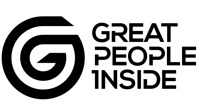Loosing an Employee
As a manager, losing an employee might invoke one of two reactions – “Well, that solves one problem!” 😮💨,
or “How will we survive without them?!'” 😮
Let’s face it, losing employees can be emotional, expensive and disruptive.
But let’s talk about the elephant in the room: Not all resignations hit the same.
It’s natural for managers to experience a range of emotions when an employee hands in their resignation. Sometimes though that feeling, deep in the pit of your stomach, can be different depending on the employee. For example:
If the employee is a top performer you might feel:
- Disappointment: They were a real asset and losing them is a massive setback.
- Frustration: Better retention strategies might have saved them.
- Regret: You know you could have done more to keep them.
- Anxiety: How to fill the gap left and what about the impact on team dynamics.
- Sadness: You will miss them; they were a valued colleague and team member.
On the other hand, if the employee is a poor performer you might feel:
- Relief: You’re finally free from the awkward pep talks and hand-holding.
- Validation: Deep down, you knew they weren’t quite right for the role.
- Guilt: Did I support their development or address their performance issues.
- Anxiety: Concerns about the potential for disruption in the team.
- Indifference: “They’ll be fine… and so will we.”
But the Question is – Why are you waiting for resignations to just happen? You don’t have to feel stuck waiting for the poor performer to leave.
Enter the GPI Edge.
With our scientifically-backed assessments, you can uncover what’s really going on with your team before they start updating their LinkedIn profiles. These aren’t your run-of-the-mill personality quizzes. We’re talking about digging into motivations, values, and hidden drivers of engagement – things a survey could never tell you.
Why does it matter?
Because knowing what your team truly needs means:
✅ Fewer surprise exits.
✅ Better team dynamics.
✅ A culture that people want to stick around for.
We’re not saying you’ll have 100% retention (we’re good, but not that good). But wouldn’t you want to reduce turnover by more than 60%?
Request a FREE TRIAL of our assessments.
Because keeping your best employees engaged—and maybe even keeping your sanity intact is worth it.

